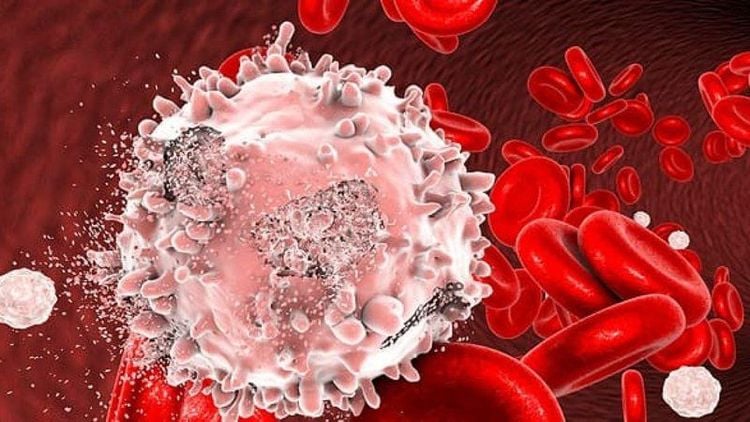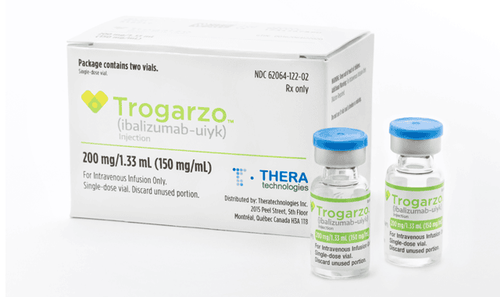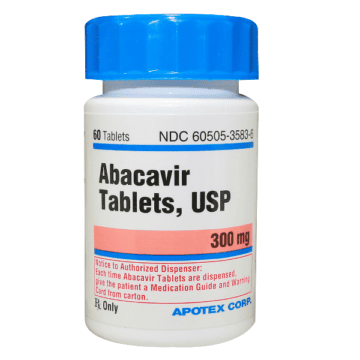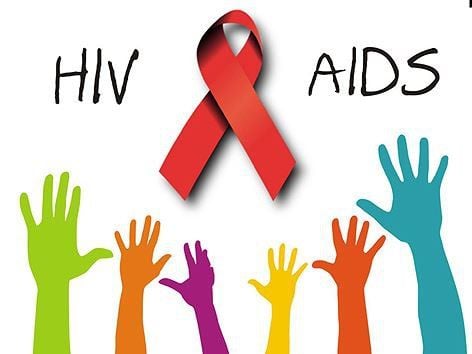This is an automatically translated article.
A CD4 T-cell count is an indicator of how well your immune system is working. These are white blood cells that fight infection and are also the target of the HIV virus. Therefore, monitoring the number of CD4 T-cells is extremely necessary in the decision to initiate as well as to monitor treatment in HIV-infected patients.1. What are CD4 T cells?
CD4 cells are T white blood cells that play an important role in the immune system. The CD4 cell count provides information about the health of the immune system. This is your body's natural defense system that helps you fight off pathogens, including bacterial and viral infections.CD4 cells are also sometimes called T cells, T lymphocytes, or helper (“helper”) cells.
Your CD4 cell count is the number of cells counted in one millimeter of blood. This is a symbolic number that gives an estimate of the number of all the CD4 cells in your body. The higher the number, the stronger the immune system.
2. What is the relationship between CD4 T cells and HIV infection?

Khi nhiễm HIV tiến triển, số lượng các tế bào này giảm dần
In contrast, as HIV infection progresses, the number of these cells gradually decreases. People with HIV have a CD4 cell count below 200, HIV has progressed to AIDS, and are at high risk of serious health problems. At this point, HIV treatment regimens should be recommended for all people living with HIV. This is especially important for people with low CD4 counts.
When you get effective HIV treatment, the HIV virus is under control, your CD4 count will gradually increase. Your immune system will be continuously strengthened, equivalent to normal people.
In case you have HIV without HIV treatment, your CD4 count will decrease over time. The lower the CD4 cell count decreases, the weaker the immune system becomes and the higher the risk of disease.
3. How to monitor CD4 cell count before HIV treatment?
In the past, CD4 cell counts were often used to guide decisions about when to initiate HIV treatment. However, a growing body of evidence suggests that all people with HIV can benefit from HIV treatment. Accordingly, treatment should be started as soon as possible, regardless of CD4 count. Now, while you are on HIV treatment, it is your viral load that is an important indicator of your health and the effectiveness of your treatment, rather than your CD4 cell count as previously thought.However, monitoring of the CD4 cell count in the blood remains essential immediately after establishing a diagnosis of HIV infection. At the time of initiation of HIV treatment, if the CD4 count is low, the patient's prognosis is less favorable than that of someone with preserved CD4, indicating disease progression and a weakening immune system. .
If the patient is considered to delay HIV treatment, monitoring the CD4 count will help the doctor monitor the progress of the disease, choosing a more appropriate time to initiate treatment in the future.
If your CD4 cell count is low, you need to start your HIV treatment as soon as possible. Moreover, the doctor will prescribe additional drugs to actively prevent infections. This is called preventive treatment. For example, you may need to take extra cotrimoxazole to prevent pneumonia caused by PCP, a common cause of pneumonia in HIV/AIDS subjects, until your CD4 cell count rises above 200 during the procedure. HIV treatment.
In the case of a lower CD4 cell count, the patient needs to have some additional tests, such as screening for pulmonary tuberculosis, in order to treat it early before it manifests itself.

Nếu số lượng tế bào CD4 của bạn thấp, bạn cần bắt đầu phác đồ điều trị HIV càng sớm càng tốt
4. How is CD4 cell count monitored during HIV treatment?
When you start HIV treatment and your viral load starts to decrease, your CD4 cell count is likely to gradually increase. The rate at which CD4 cells grow is individual.During the first months of HIV treatment, your CD4 count will continue to be regularly monitored. However, the viral load in the blood is a more important indicator of health and treatment effectiveness than the CD4 cell count. After some time, the time to check the CD4 cell count will be more spaced, depending on your condition.
Details about when to check your CD4 cell count during HIV treatment are as follows:
If you have had an undetectable viral load for at least one year and your CD4 cell count is more than 200, your doctor CD4 cell counts may be recommended once a year. If you've had an undetectable viral load and a CD4 cell count above 350 for at least a year, your doctor may consider monitoring your CD4 cell count unnecessary, as long as your viral load still undetectable. However, if your viral load is increasing or you have symptoms suggestive of active HIV, your CD4 cell count will be continuously monitored at each routine visit to assess effectiveness. treatment, consider changing the regimen if there is evidence of resistance.

Trong những tháng đầu tiên điều trị HIV, số lượng CD4 của bạn sẽ tiếp tục được theo dõi thường xuyên
5. What factors can affect CD4 cell count?
CD4 cell counts can vary greatly between people, whether or not they have HIV.In fact, the CD4 cell count can increase or decrease in response to various internal and external environmental factors such as exercise, sleep deprivation, smoking or comorbidities. . However, these factors have no significant effect on the immune system in its task of fighting infection.
Thus, instead of placing too much emphasis on an individual test result, it makes more sense to monitor trends in changes in CD4 cell counts over time. Best of all, CD4 counts are measured at the same clinic and at the same time of day. If you are having an infection, such as the flu or a herpes outbreak, let your doctor know and should delay testing your CD4 count until you are better. In the event that the results are too different from expectations when there are absolutely no clinical suspicions, the physician should repeat the CD4 count test again to rule out the possibility of laboratory error.
In short, when you have HIV/AIDS but the higher your CD4 T-cell count, the better. As HIV infection progresses, the number of these cells gradually decreases. Accordingly, in the treatment of HIV/AIDS, along with measuring the viral load in the blood, periodic monitoring of the number of CD4 T-cells is extremely important, in order to assess the effectiveness of the drug early, adjust the regimen. to strengthen the immune system for the patient, avoid contracting dangerous opportunistic diseases.
To register for examination and treatment at Vinmec International General Hospital, you can contact Vinmec Health System nationwide, or register online HERE
Reference source: Hiv.va.gov ; Aidsmap.com
MORE:
Living with HIV/AIDS: What you need to know T-lymphocytes: What you need to know How long after exposure to HIV can an HIV test be performed?













